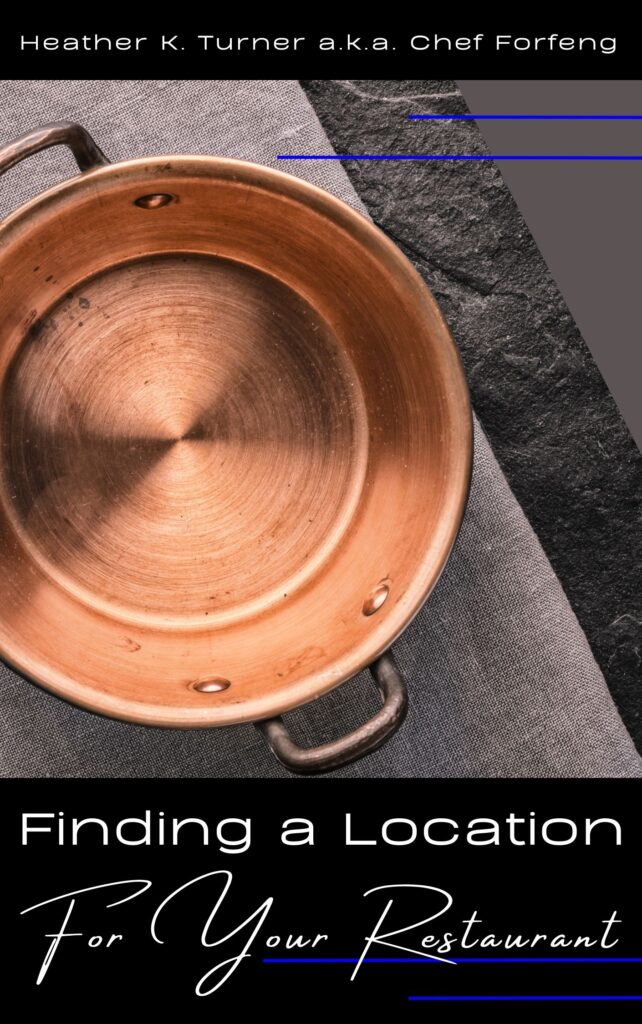by Heather T. | Nov 8, 2023 | Food, Marketing, Observations, Operations, restaurants
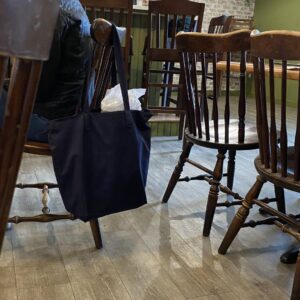
A recent inquiry from an individual interested in gaining insights into my approach during restaurant audits inspired this post. While I can’t disclose specific client information due to confidentiality, I can give some examples of things I typically assess when evaluating a restaurant or other hospitality establishment.
It’s important to clarify that this pertains to my private business clients, not those from SCORE mentoring.
Whenever my husband and I dine out or when I’m out with friends or business associates, I tend to analyze various elements of the dining experience, including visuals, menu offerings and design, food quality, food presentation and service. It’s hard for me to turn off the evaluation gerbil wheel in my brain. But at least I’m easy to get along with while dining out because the food has to be really, really bad for me to complain.
I gave some examples of a recent dining experience my husband and I had, highlighting aspects I would typically take note of during a restaurant audit and thought I’d put them into print.
Please note that this covers only the front-of-house visual aspects and doesn’t come close to a comprehensive audit, which includes over 200 touchpoints or the examination of kitchen operations and food quality.
I always encourage owners and managers to “be” a customer and evaluate the space as often as possible. Sit at an empty table for a little while during service or at the end of the bar and just observe.
If you’re paying attention, you can always find room for improvement.
Here are a few things that we noted while dining that could use some TLC to enhance better guest/customer satisfaction, check averages, and tip averages.
Enhanced Specials Promotion:
As we entered the restaurant, we noticed a low-standing sandwich board with the day’s specials. Unfortunately, it wasn’t eye-catching for walk-in customers, and while we visually saw it on entering, we didn’t stop to read it, assuming that the specials would be repeated in some way when we sat down.
Our server and the server who came to take a neighboring tables order didn’t mention the specials without us specifically asking. The specials weren’t visibly posted inside or available in printed form. When we inquired, our server directed us to the board outside. In this scenario, the restaurant missed an opportunity to effectively promote its specials, and the server missed a chance to increase her tip by just verbalizing the specials instead of asking us to get up and walk halfway through the restaurant and around the corner to view them.
Seating Comfort Assessment:
An uncomfortably cold draft from a floor vent under our chair caught our attention. This is why I recommend that owners and managers sit in every seat within the restaurant in all seasons. They should evaluate whether the air conditioning or heating causes discomfort, whether drafts exist, and whether the music volume is excessive in certain areas. Adequate lighting for reading menus is also a key consideration.
Convenience in Restrooms:
Restrooms should have hooks and/or a small table in all-gender bathrooms for patrons to hang their bags or coats. Placing personal items on the floor is often considered unhygienic; in this instance, there was no space on the toilet tank or the narrow sink.
During colder months, having a place to hang coats is particularly appreciated. People may be entering the restrooms while waiting for a table and before they sit down (and may still have their coats on) or after paying the check and preparing to leave.
Safety Concerns in the Kitchen:
It’s important not to have glass drinking glasses in the kitchen on the line. Several times, we observed servers passing glasses of soda directly to line cooks through the pass-through window, and we could see them placed on the line right above the stove area. This practice can lead to accidents, such as glass breaking and falling into food. Proper safety protocols are essential, i.e., using plastic vs glass.
Discreet Refilling:
Refilling ketchup bottles from a #10 can in the dining area can be unappetizing to customers. Although ketchup has a long shelf life, it’s best not to expose the refilling process to patrons. Moreover, maintaining cleanliness and sanitization is crucial for the condiment containers. While many restaurants do this and ketchup has a very long shelf life, A. I don’t want to see it as a customer; I noticed because I notice these things, but most customers do notice and it sticks in their subconscious as an “ewwww” factor. B. I’d question when the last time these refilled bottles were cleaned out totally and sanitized. Our bottle was about ½ full, and my husband’s ketchup and my ketchup from the same bottle were two different colors of red.
Effective Upselling:
Our server missed opportunities for upselling both drinks and desserts. No ask to see if we would like coffee or dessert, just an ask if we wanted the check. Encouraging customers to explore the bar menu or offering dessert options at the end of the meal can significantly increase overall sales and enhance the dining experience.
Adequate Space Between Tables and Chairs:
While maximizing seating capacity is important for revenue, it’s equally crucial to ensure customer comfort and ease of movement. Waitstaff should have ample space to take orders, serve food and drinks, and clear tables without inconveniencing customers.
(If you were wondering about the above photo, this is a perfect example from the restaurant in question; how much room would there be if someone was sitting in the other seat? There is already not enough room to walk between chairs without bumping into the bag).
When laying out a dining room and estimating space, chairs should not pushed into the table but should be pulled out enough as if someone was sitting in each seat, plus some extra space for handbags or backpacks and coats to hang in the winter (especially if there is no coat rack, as in this case).
There is nothing worse for a customer than having to ask people not to just move their “stuff” but to actually have to get up so someone could get out to use the restrooms or to leave.
It’s even worse if you have waitstaff juggling hot food or a tray of drinks. If your dining room layout reminds you at all of a full flight in an airplane with tiny seats, cramped space, etc., you really need to rethink your layout. What you may sacrifice in a seat or two, you will make up in spades from happy waitstaff and repeat customers.
As an owner or manager of a restaurant, most improvements can be gleaned just by taking the time to observe and to ask your staff for suggestions and improvements.
A consult I did a few years ago where we asked the staff for suggestions (and this had never been done before there) resulted in many ideas that saved the owner money, and made the working environment easier to use through flow suggestions and more productive for staff because suggestions were implemented, and staff appreciated the fact that they were listened to.
These observations are not meant to be critical but rather constructive to pinpoint areas where improvement can enhance the return on investment (ROI) and the return on the total investment (ROTI). ROTI can also be Return on Time Investment, which also applies in this case.
by Heather T. | Oct 23, 2020 | Food, Marketing, Operations, restaurants
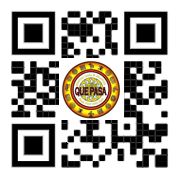
Not a working QR code, just an example
This past Monday I ran a workshop session for my SCORE chapter, Restaurants, Mastering the Art of Takeout. One of the topics I touched on was QR codes and how restaurants and other foodservice establishments could leverage use QR codes in conjunction with Google Docs to be creative with their menus as well as offer things like reheating instructions for takeout to customers without having to add a printed piece of paper to the takeout order. I had written a blog post touching briefly on this topic last month, Tackling Some of the Challenges of Takeout Food for Restaurants.
Before I dive into some of the uses, there are somethings I want to touch on first. This is something I have been discussing with many of my own business clients for months.
If you are not familiar with Google Docs, it’s Google’s free online alternative to Microsoft office, there are also Google Sheets (like Excel), Google Slides (like Powerpoint), and quite a few more applications. I like using the online applications because you can share with anyone, share editing capability with anyone, access it from anywhere, and unlike desktop-based programs, which even if autosave is turned out, you may lose content if you have a power outage or other computer issue. When you add something in a Google Doc, it’s still there even if you get booted off the internet or you go offline for other reasons.
If you are looking for help with the Google applications, Google itself has a lot of resources, https://support.google.com/a/users/answer/9282664?hl=en and https://support.google.com/docs/?hl=en#topic=1382883 have some great tutorials. There are also some very helpful tutorial/help documents at https://edu.gcfglobal.org/en/googledocuments/.
If you are not overly familiar with QR Codes, this might also be useful. I am glad to see the resurgence of them because they had so many practical applications and were also often misused but that’s a topic for another blog, but if you want a laugh, this is probably my favorite UnMarketing video featuring Marketing Guru (and I don’t apply the term Guru lightly to anyone) Scott Stratten, QR Codes Kill Kittens. It looks like a session he did at one of the conferences he speaks at but sadly it doesn’t say which it. Scott is also one of my favorite people to follow on Twitter.
Before you create your first QR code, read the difference between both, and make sure you read the fine print before you set up and start using them in your business. I bring this up because many Dynamic QR Code creation platforms offer it as “free” but it’s not really, it’s a free trial or they don’t actually point out that heaven forbid you actually want to edit/change any links after you’ve created them…….you have to pay for them.
Static QR Code: A Static QR Code contains information that is fixed and un-editable once the Code has been generated.
Dynamic QR Code: Dynamic QR Codes allow you to update, edit, and change the type of the QR Code however many times you need, which makes them the best fit for restaurants and marketing purposes.
Back to the topic at hand ?
With many menus now only being hosted solely online and traffic driven to them in-house from QR codes or having to do daily printed menus for safety reasons, having an easily editable and also (and this is important) mobile-friendly version of your website is key. While you can tie your menus into online ordering if you want people to call or email or message you to make a takeout order instead of ordering through an app or website, being able to easily edit and change your menus becomes a higher priority, especially if you employ a web designer to maintain your website and who would charge you every time you wanted to make a menu change. While you can upload a photo or image of the menu daily or embed a word doc or other type of document, while it may look great on a desktop or laptop, it’s not generally mobile-friendly.
I bring this up because I’m seeing a lot of this recently. A mobile-friendly website with an image in it (the menu) that is too small to read on mobile because it doesn’t resize. Example one below, example two (Below that) is what a Google Doc looks like on mobile.
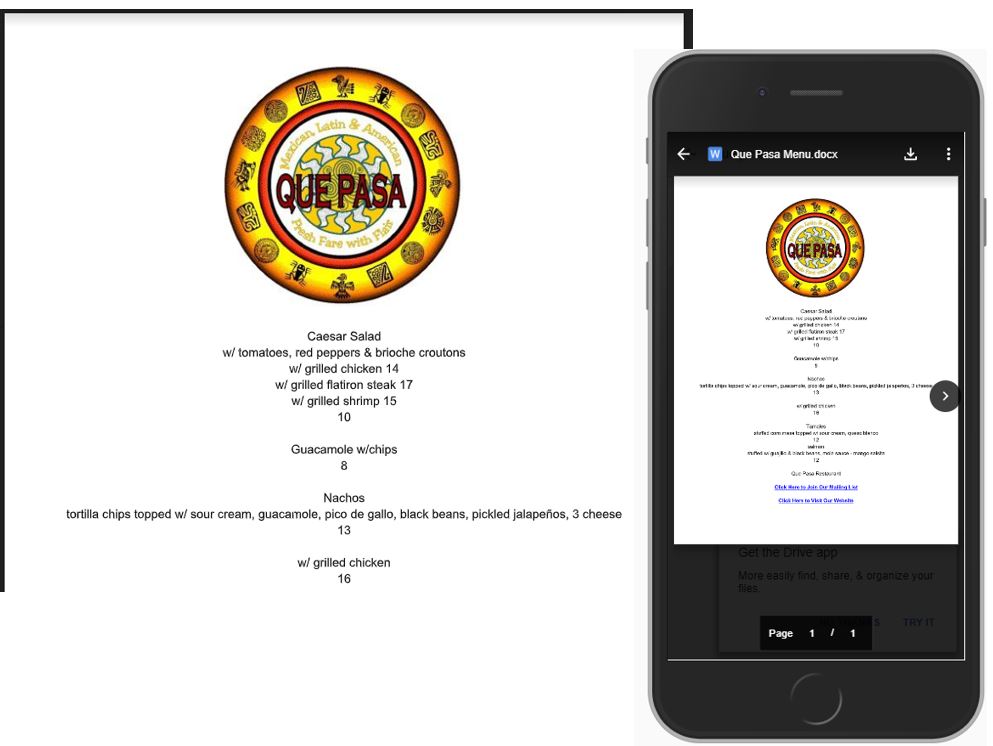

Even if you don’t want to use Google Docs for the above reason, it is something to think about if you are giving people heating or re-heating instructions for items, think about doing a Google Doc for menu items and doing a QR code with a link to the online instructions to reheat them. These QR codes can be easily printed off using an in-house printer and Avery labels and stuck onto the outgoing takeout containers. Whether you do one document that has general heating instructions for all, one that has individual heating instructions for everything that could be reheated on the menu (remember this is extremely easy to change the information online and an update is instantaneous) or customized documents for each with different QR codes is up to you. The QR code on the below sample actually works, any links to my Twitter account, come on over and say hello!
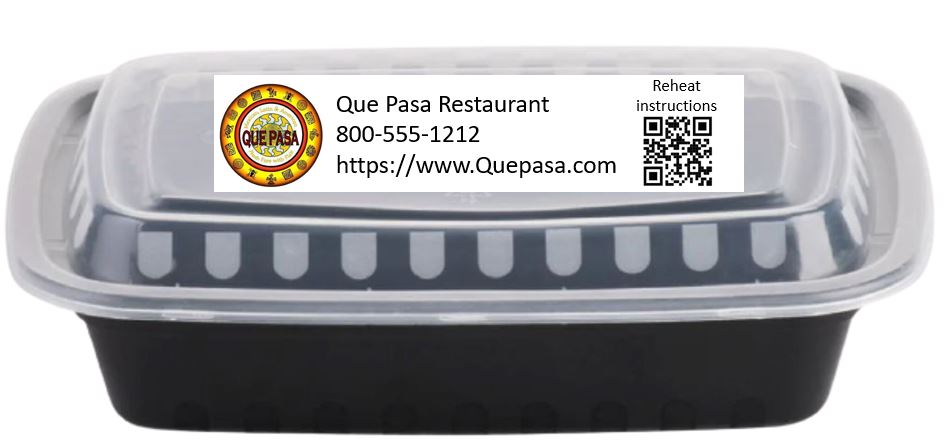
In a few weeks, I’ll be doing a follow-up Webinar for SCORE (these are free so I encourage people to take advantage of both SCORE national and regional/state offerings as they come up.)
by Heather T. | Sep 22, 2020 | Food, Marketing, Operations, restaurants
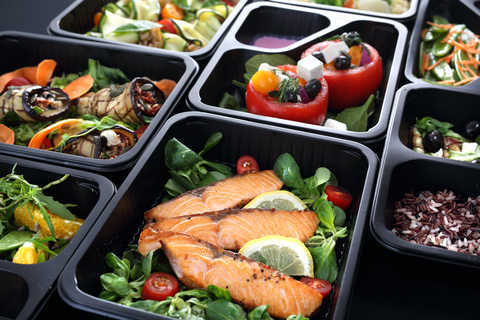 For at least the foreseeable future takeout is probably here to stay for a bit. Love it or hate it as a restaurant owner, having to accept the fact that it is a viable revenue stream is still tough for a lot of owners and managers to adjust to, especially for fine dining restaurants. But as the colder weather approaches it bears a lot of thought to re-address all aspects of takeout.
For at least the foreseeable future takeout is probably here to stay for a bit. Love it or hate it as a restaurant owner, having to accept the fact that it is a viable revenue stream is still tough for a lot of owners and managers to adjust to, especially for fine dining restaurants. But as the colder weather approaches it bears a lot of thought to re-address all aspects of takeout.
I’ve seen many restaurants trying to offer the same menus for in-person dining repurposed to do as takeout, unfortunately for many restaurants, that can be a fatal flaw. Not every menu item adjusts to the takeout scene well, in many cases, reheating it causes overcooking, dryness, or in the case of many fried or sauteed items (like a chicken Marsala with a chicken breast that has been egg and flour dipped and then sauced right before serving) ends up being soggy in transit and may not lend well to reheating.
I’ll be addressing doing a deep dive on the menu itself in the next blog but wanted to address some things regarding takeout containers first.
Questions to ask:
Does it reheat well? And specifically, have you as the Chef or management/owners tried to reheat it in a variety of ways? To take the chicken Marsala as a good example, microwaving the chicken will probably kill it (unless you like rubber chickens), and nuking the sauce will probably break it. Heavy cream doesn’t generally play nice with microwaves. A perfect reheat would probably be the chicken heated up separately in a hot oven with the sauce separate and reheated with the mushrooms in a saucepan and the sauce packed to go separately.
So…Do your customers know how to reheat your food? And if not, how would they know? And if you don’t want to bother considering that, is a rubber chicken with broken sauce doing your restaurant any favors as an example? The number of reviews I have seen since Covid hit mentioning that people were not very happy with their take out for restaurants with normally good to great reviews has not decreased much so it’s still apparently a big problem.
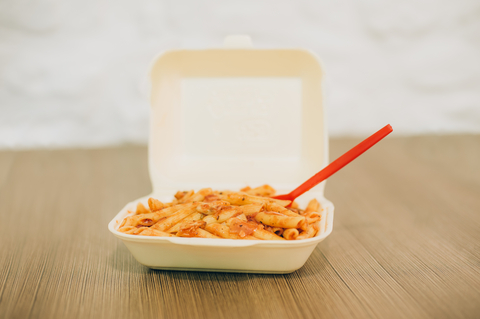 Next, Is it going to look attractive in the container? While some restaurants may not have the style of dining that plate presentation is high on the priority list, if you have a fine dining restaurant (for example) and you take pride in that, it is a consideration. While I have worked a variety of types of restaurants no matter the level of dining, plate presentation was always important to me, but in some cases, a takeout burger and waffle fries may not have a ton of ways to dress it up but even that can either look attractive when unboxed (or not). I am seeing a huge amount of takeout photos on Instagram and Facebook, so the love affair with taking food photos has not dimmed much. Does this container of pasta look ok? Or could a little garnish improve it? Not sure? Take a few photos with your smart phone yourself? Does it look attractive? Appealing? If you saw it posted on Instagram, would it make you want to get take out from your restaurant?
Next, Is it going to look attractive in the container? While some restaurants may not have the style of dining that plate presentation is high on the priority list, if you have a fine dining restaurant (for example) and you take pride in that, it is a consideration. While I have worked a variety of types of restaurants no matter the level of dining, plate presentation was always important to me, but in some cases, a takeout burger and waffle fries may not have a ton of ways to dress it up but even that can either look attractive when unboxed (or not). I am seeing a huge amount of takeout photos on Instagram and Facebook, so the love affair with taking food photos has not dimmed much. Does this container of pasta look ok? Or could a little garnish improve it? Not sure? Take a few photos with your smart phone yourself? Does it look attractive? Appealing? If you saw it posted on Instagram, would it make you want to get take out from your restaurant?
Are there reheating instructions? A medium-rare steak will not be MR when reheated improperly, does that reflect on the restaurant if customers overcook a dish at home? I would say yes because you can’t expect people to know.
Can customers reheat a dish directly in the container or does it need to be transferred? Is it easy to transfer? Is it messy? Do you loose sauce or ingredients in transferring?
Is the takeout container reusable? To use an example of why that may be a consideration: when we lived in CT, there were two oriental restaurants with similar pricing and fairly comparable food. We ordered from one because A. the containers were not flimsy, the other ones were and we gave up ordering food from them when we had a mess to clean up at home almost every time, and B. the containers were washable and reusable.
Is the takeout container cheap and flimsy? (see above) If you want to go for non-reusable/non-recyclable containers, is the container going to stand up to travel, being lifted out of a bag, and held with one hand (or will it take two and fold over spilling everything everywhere?). We have gotten take out from restaurants who use the round oval aluminum take out containers which while they are fine for light food like salads, load them up with a heavy entrée with sauce and the result can be a mess on the customers end. They might remember the food was good but they will also remember the hassle and inconvenience.
Does the container retain heat well? or remain cold? If I order takeout from a restaurant minutes away I expect the food to remain hot until I get home. And is it protected from anything that is not hot? Is there a layer of cardboard or another item in between. Is your staff giving attention to packing up take out so salads don’t end up directly above or below a hot item? Or cold desserts getting melted by being close to a hot item? Yum wilted warm salad. Delish!
Having a variety of containers on hand for different types of items are highly suggested. And add the price of takeout to your menus, it may only be 15-20 cents per but it can add up very fast if you don’t factor it in and it appears looking at a lot of menus from pre-Covid and current, many restaurants are not. It’s a small adjustment but worth it.
 Consider the Chinese takeout container, high sides, fairly heavy-duty, and well designed, there is a reason this design has been in use for a very long time. It also stacks well and that is an additional factor to think about when evaluating your takeout containers. I’m not saying every restaurant should use these, but merely to consider things that need to factor in choosing containers. Stackability, structure, and compact fit in a bag vs rounds or an assortment of different shaped oblongs. The vast variety of takeout containers available on the market offers a plethora of options, find what works for you instead of purely going by price or looks. The final result is the important part and again if a decent container that fits the bill is 5 cents more then the cheap round, buy it and add it to the menu price, your customers will thank you.
Consider the Chinese takeout container, high sides, fairly heavy-duty, and well designed, there is a reason this design has been in use for a very long time. It also stacks well and that is an additional factor to think about when evaluating your takeout containers. I’m not saying every restaurant should use these, but merely to consider things that need to factor in choosing containers. Stackability, structure, and compact fit in a bag vs rounds or an assortment of different shaped oblongs. The vast variety of takeout containers available on the market offers a plethora of options, find what works for you instead of purely going by price or looks. The final result is the important part and again if a decent container that fits the bill is 5 cents more then the cheap round, buy it and add it to the menu price, your customers will thank you.

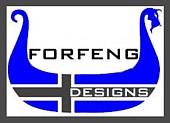




 For at least the foreseeable future takeout is probably here to stay for a bit. Love it or hate it as a restaurant owner, having to accept the fact that it is a viable revenue stream is still tough for a lot of owners and managers to adjust to, especially for fine dining restaurants. But as the colder weather approaches it bears a lot of thought to re-address all aspects of takeout.
For at least the foreseeable future takeout is probably here to stay for a bit. Love it or hate it as a restaurant owner, having to accept the fact that it is a viable revenue stream is still tough for a lot of owners and managers to adjust to, especially for fine dining restaurants. But as the colder weather approaches it bears a lot of thought to re-address all aspects of takeout. Next, Is it going to look attractive in the container? While some restaurants may not have the style of dining that plate presentation is high on the priority list, if you have a fine dining restaurant (for example) and you take pride in that, it is a consideration. While I have worked a variety of types of restaurants no matter the level of dining, plate presentation was always important to me, but in some cases, a takeout burger and waffle fries may not have a ton of ways to dress it up but even that can either look attractive when unboxed (or not). I am seeing a huge amount of takeout photos on Instagram and Facebook, so the love affair with taking food photos has not dimmed much. Does this container of pasta look ok? Or could a little garnish improve it? Not sure? Take a few photos with your smart phone yourself? Does it look attractive? Appealing? If you saw it posted on Instagram, would it make you want to get take out from your restaurant?
Next, Is it going to look attractive in the container? While some restaurants may not have the style of dining that plate presentation is high on the priority list, if you have a fine dining restaurant (for example) and you take pride in that, it is a consideration. While I have worked a variety of types of restaurants no matter the level of dining, plate presentation was always important to me, but in some cases, a takeout burger and waffle fries may not have a ton of ways to dress it up but even that can either look attractive when unboxed (or not). I am seeing a huge amount of takeout photos on Instagram and Facebook, so the love affair with taking food photos has not dimmed much. Does this container of pasta look ok? Or could a little garnish improve it? Not sure? Take a few photos with your smart phone yourself? Does it look attractive? Appealing? If you saw it posted on Instagram, would it make you want to get take out from your restaurant?  Consider the Chinese takeout container, high sides, fairly heavy-duty, and well designed, there is a reason this design has been in use for a very long time. It also stacks well and that is an additional factor to think about when evaluating your takeout containers. I’m not saying every restaurant should use these, but merely to consider things that need to factor in choosing containers. Stackability, structure, and compact fit in a bag vs rounds or an assortment of different shaped oblongs. The vast variety of takeout containers available on the market offers a plethora of options, find what works for you instead of purely going by price or looks. The final result is the important part and again if a decent container that fits the bill is 5 cents more then the cheap round, buy it and add it to the menu price, your customers will thank you.
Consider the Chinese takeout container, high sides, fairly heavy-duty, and well designed, there is a reason this design has been in use for a very long time. It also stacks well and that is an additional factor to think about when evaluating your takeout containers. I’m not saying every restaurant should use these, but merely to consider things that need to factor in choosing containers. Stackability, structure, and compact fit in a bag vs rounds or an assortment of different shaped oblongs. The vast variety of takeout containers available on the market offers a plethora of options, find what works for you instead of purely going by price or looks. The final result is the important part and again if a decent container that fits the bill is 5 cents more then the cheap round, buy it and add it to the menu price, your customers will thank you.
